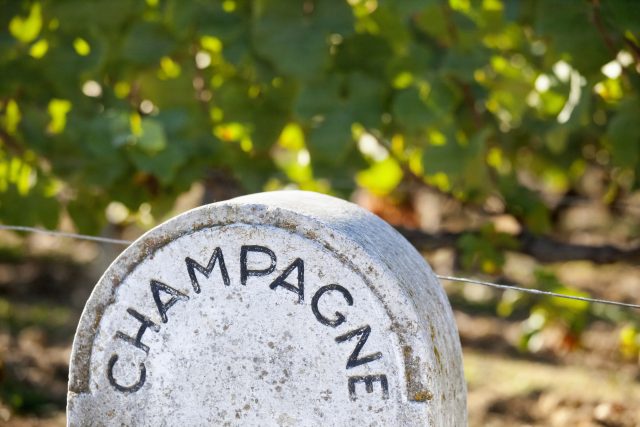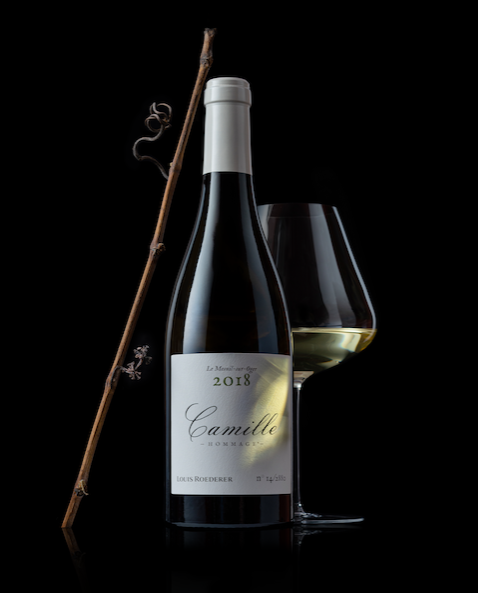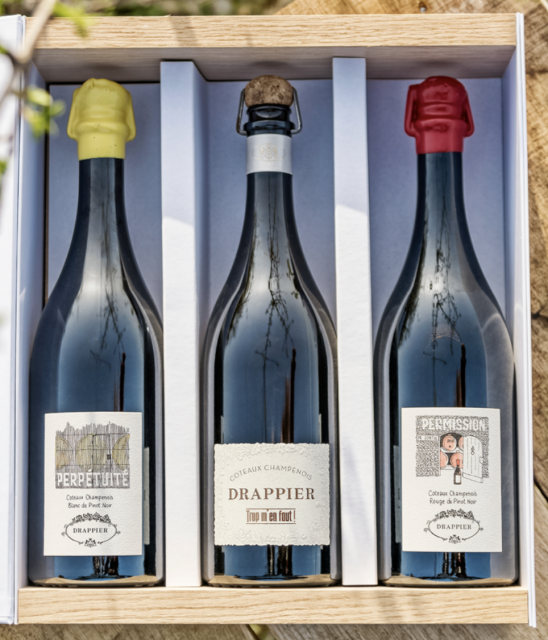In focus: The rise of still wines from Champagne
While production in Champagne remains firmly focused on high-quality sparkling wine, there are notable ripples of activity on the still wine front, finds Richard Woodard.

To most people, the still wines of Champagne, bottled as Coteaux Champenois, are a local curiosity that elevates the concept of ‘niche’ to a new level. After all, they account for only 0.7% of production in a region that is laser-focused on making high-quality sparkling wine.
That’s not going to change in the foreseeable future, but there are stirrings of activity on the still wine front. In 2019, Charles Heidsieck released four single cru still Chardonnays from the 2017 vintage – representing Montgueux, Villers-Marmery, Vertus and Oger – and, in February this year, came two more Coteaux Champenois launches from Louis Roederer.
This pair of wines from the 2018 vintage, named Hommage à Camille in tribute to Camille Olry-Roederer, comprise Camille Charmont, a red from a 43-are lieu-dit in Mareuil-sur-Aÿ; and Camille Volibarts, a white from a 55-are lieu-dit in Le Mesnil-sur-Oger.

In May came the unveiling of a distinctive Coteaux Champenois wine trio from Champagne Drappier: Trop m’en Faut!, a multi-vintage (2017/18) 100% Fromenteau, aka Pinot Gris; Permission, a single varietal Pinot Noir; and Perpétuité, a 14-vintage blended white Pinot Noir sourced from Drappier’s réserve perpetuelle, or pseudo-solera stock of reserve wines. With all of these releases, production is minuscule and prices predictably high, but it does beg the question: why now?
Drappier is an old hand at Coteaux Champenois: the Aube-based house has been making still wine since its foundation in 1808, and its Urville Rouge bottling is a stalwart of the category. “The wines are interesting to provide another expression of our terroir, digging into our history, when our ancestors only knew how to make still wines,” says Hugo Drappier. “Before ‘Champagne’ as a sparkling wine became famous, what made our wines well-known was our ability to make delicate white wine out of red grapes (vins gris).”
Making a still wine in Champagne is simple enough; making a good still wine is another matter, and not something easily done on a whim. The vineyards for Roederer’s Hommage à Camille, for instance, were planted in 2002 with that specific purpose in mind.
Different clones were used – Burgundian and Alsatian, and more recently massal selections from the house’s nursery – and, explains Roederer’s UK brand manager Alex Tilling, the vines are guyot, not cordon, trained, and pruned to encourage a higher canopy, more solar exposure and less malic acid in the grapes.
“The objective was to have freedom and innovation in expressing the terroir of Champagne in a new way,” she adds. “To see what lies behind the bubbles and really explore the soil.”
Partner Content
The work is ongoing – other lieux-dits may spawn single vineyard wines, or a blend – and the project has broader benefits. Roederer experimented with making still Chardonnay from one plot in Avize, but soon discovered that it was better suited to sparkling (Cristal) production. “There was so much chalk, so they learned that areas with a bit more clay gave the breadth of palate required for still,” says Tilling. “This expands the knowledge on both styles.”

Coteaux Champenois wines are hardly significant in market terms – Bordeaux Index’s head of investment Matthew O’Connell describes them as “a very niche market, but an interesting development” – but they tap into trends around consumer interest in the origin of wines. Add in the positive impact on ripeness of climate change, and the growth of high-quality, provenance-rich grower Champagnes, and it’s not hard to see why these wines are emerging now.
Such trends are also manifesting themselves more broadly in Champagne. Bollinger makes one of the best-known Coteaux Champenois wines, La Côte aux Enfants, from a sloping vineyard just outside Aÿ, but has also unveiled two ‘single origin’ Champagnes in the past couple of years: VZ15 and VZ16.
These 100% Pinot Noir wines focus on a single cru – Verzenay on the Montagne de Reims – and a single year, but even here the Champagne penchant for blending makes itself felt: Bollinger VZ16 is centred on Verzenay and 2016, but also includes base wines from Avenay and Tauxières, and reserve wines back to 2006, for greater complexity and harmony.
“Pinot Noir from Verzenay brings a certain depth,” says Victoria Carfantan, director of Champagne Bollinger UK. “It brings elegance, as well as tension, and finishes with a hint of salt, reminiscent of its chalky terroir.”
Such wines are “definitely a response” to the successful approach of quality-focused growers, according to Will Hargrove, head of fine wine at Corney & Barrow. “A logical one too,” he adds. “And to be more commercial, it makes sense if you can take parcels or blends out of your non-vintage and make a better-quality wine.”
O’Connell of Bordeaux Index agrees, citing the successful examples of growers such as Selosse, Bérêche & Fils, Henri Giraud and Pierre Peters, among others. He says: “It is therefore natural that the large houses are taking steps to persist with the ultimate focus on house style, but at the same time attempting to overlay better understanding of terroir, ‘input’ years for non-vintage/multi-vintage cuvées and ever-increasing quality in winemaking – Cristal being biodynamic is interesting, for example.
“We expect this direction of travel to persist, and Bollinger’s single village cuvées (VZ15 and VZ16) have been a very successful and interesting example.”
Champagne will always be dominated by the power of the blend, but these provenance-rich wines – whether still or sparkling – offer fascination to the collector, and are an increasingly important means of communicating the intricacies of this large and complex winemaking region.




